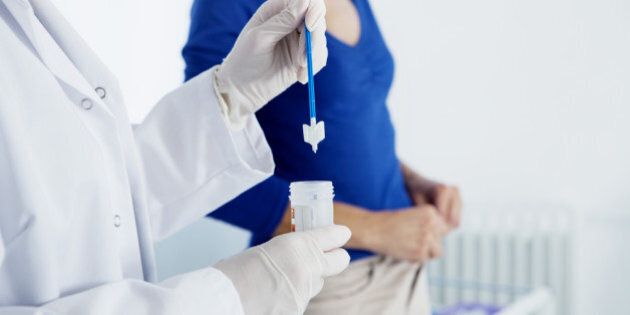
If you have a cervix, read this.
In 2013, I wrote an article about new provincial and federal cervical screening guidelines partly because women's health advocates were worried that these updated policies were putting women at risk in order to save money. There was no risk, in my opinion, in delaying the initial Pap or from the longer interlude between screening tests. But there certainly was a risk: not informing women of the difference between cervical screening and Sexually Transmitted Infection (STI) testing.
Because most Human Papilloma Virus (HPV) infections resolve on their own, the changes were based on research indicating that earlier and annual testing did not decrease sickness or death from cervical cancer. Even high-risk HPV infections that cause cellular changes (Low-grade Squamous Intraepithelial Lesion - LSIL) on the cervix tend to resolve on their own without treatment. Cervical cancer develops when there is persistent infection with a high-risk type of HPV in the presence of co-factors like a suppressed immune system. Pap testing (and/or HPV testing) indicate when treatment is necessary to prevent its development.
When Cancer Care Ontario (CCO) published fact sheets to inform the public about the new guidelines, I contacted them to point out that they also needed to provide information about the importance of STI testing. It was obvious to me at the time that there would be repercussions.
I had been selling the annual Pap as part of sexual health education classes for years. Suddenly, young women (including trans men with a cervix) were being told they didn't have to start till they were 21 (Ontario) or 25 (federally); and they didn't need to have a Pap every year. So, of course, many stopped having internal exams until they were told they had to.
Young women, in my experience, especially those whose annual Pap test coincided with -- and in some cases were dependent on -- their birth control pill renewal, had no idea what was going on during their internal exam. Despite the efforts of sexual health educators in the classroom to distinguish between the Pap test (checking for abnormal cells on the cervix) and STI screening (swabbing the cervix and inside of the vagina) when they arrived at clinic for their exam, counsellors had to take the time to explain it again.
So what's the big deal?
The importance of the distinction becomes clear when we look at the statistics. According to the lead researcher of a recently published article on this issue, over the past 10 years, chlamydia and gonorrhea rates in Canadians rose by 72 and 53 per cent, respectively, especially for chlamydia. The highest number of cases of chlamydia are diagnosed in young people between the ages of 15 - 24. The increase in diagnoses was in part due to Public Health Units encouraging an increase in testing in the early 2000s. The urine (NAAT) test (v-e-e-r-y appealing to men) also brought in more young people for testing. One of the suspected behavioural reasons for the increased number of cases was less condom use among older adolescents and young adults who made the switch from condoms to hormonal contraception without being tested first.
Untreated chlamydia, which is commonly asymptomatic, can do serious damage to the Fallopian tubes. Moreover, untreated STIs which provoke an increase in white blood cells at the site of the infection, make it easier for HIV to enter the bloodstream.
Here come the chickens
St. Michael's Hospital in Toronto raised the alarm about a decrease in testing in their recent study. The lead researcher said,
...we found that women weren't visiting family physicians as often for Pap tests, causing a drop in STI screening as well. Female patients were also less likely to be screened for syphilis, hepatitis C and HIV under the new guidelines...
When I contacted Cancer Care Ontario to complain about the lack of information on the importance of ongoing STI testing, the woman I spoke to thought it would be confusing to try to explain the difference between the various types of testing. Prior to writing this blog, I re-visited the CCO web-site looking for what I hoped would be updated literature. There is still no mention at all of STI testing.
The takeaway for readers with a cervix is this: if you have had unprotected sexual activity, whether you have symptoms or not, see your health care provider even though it is not time for your Pap test. They will look at your genitals; they will test you for chlamydia and gonorrhea and any blood-borne infections you may have been exposed to.
As for me, I guess it's time to contact CCO medical directors encouraging them to read the St. Michael's study. I wonder if they still think it's too much for women's brains to handle.
ALSO ON HUFFPOST:
